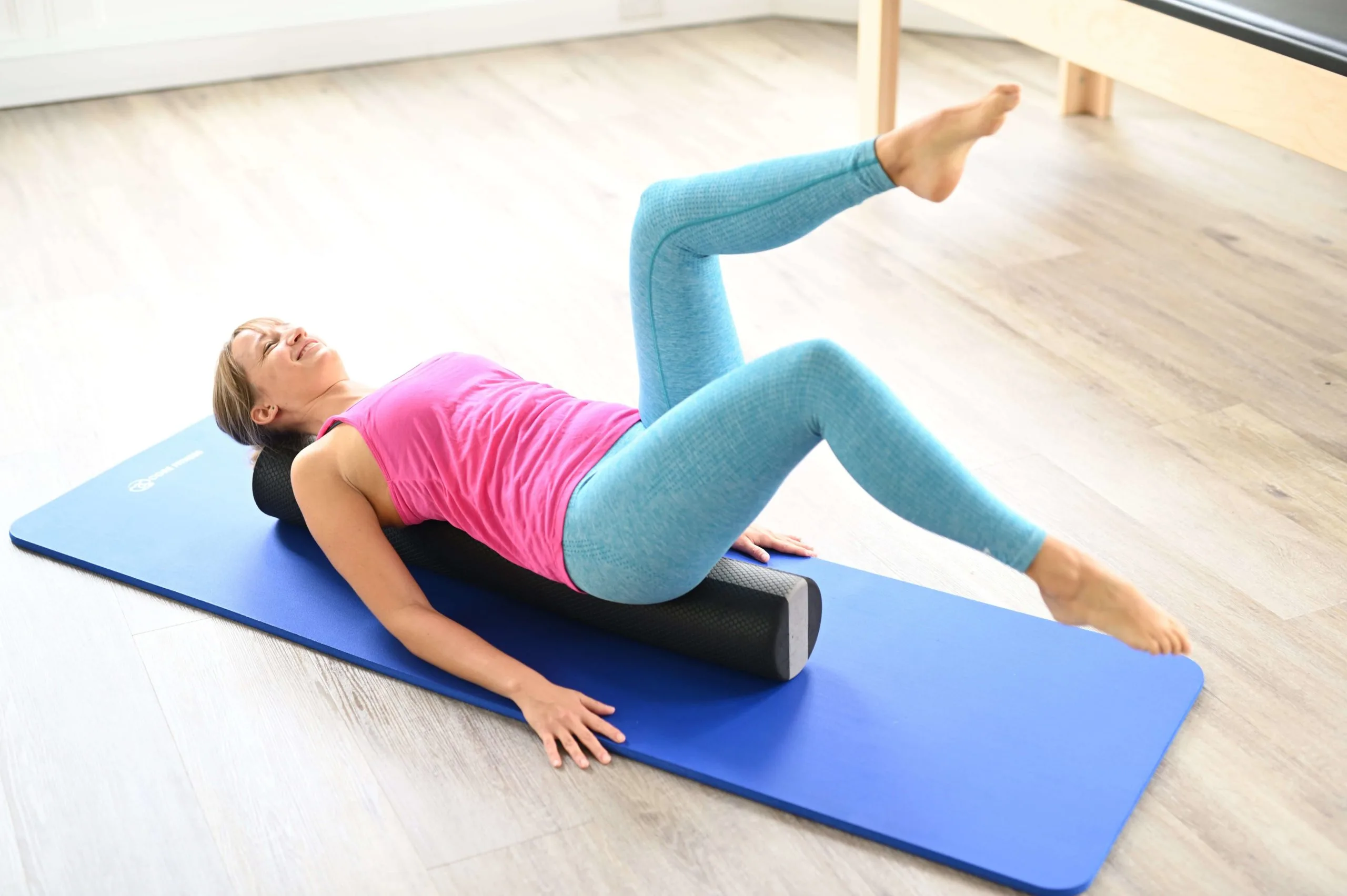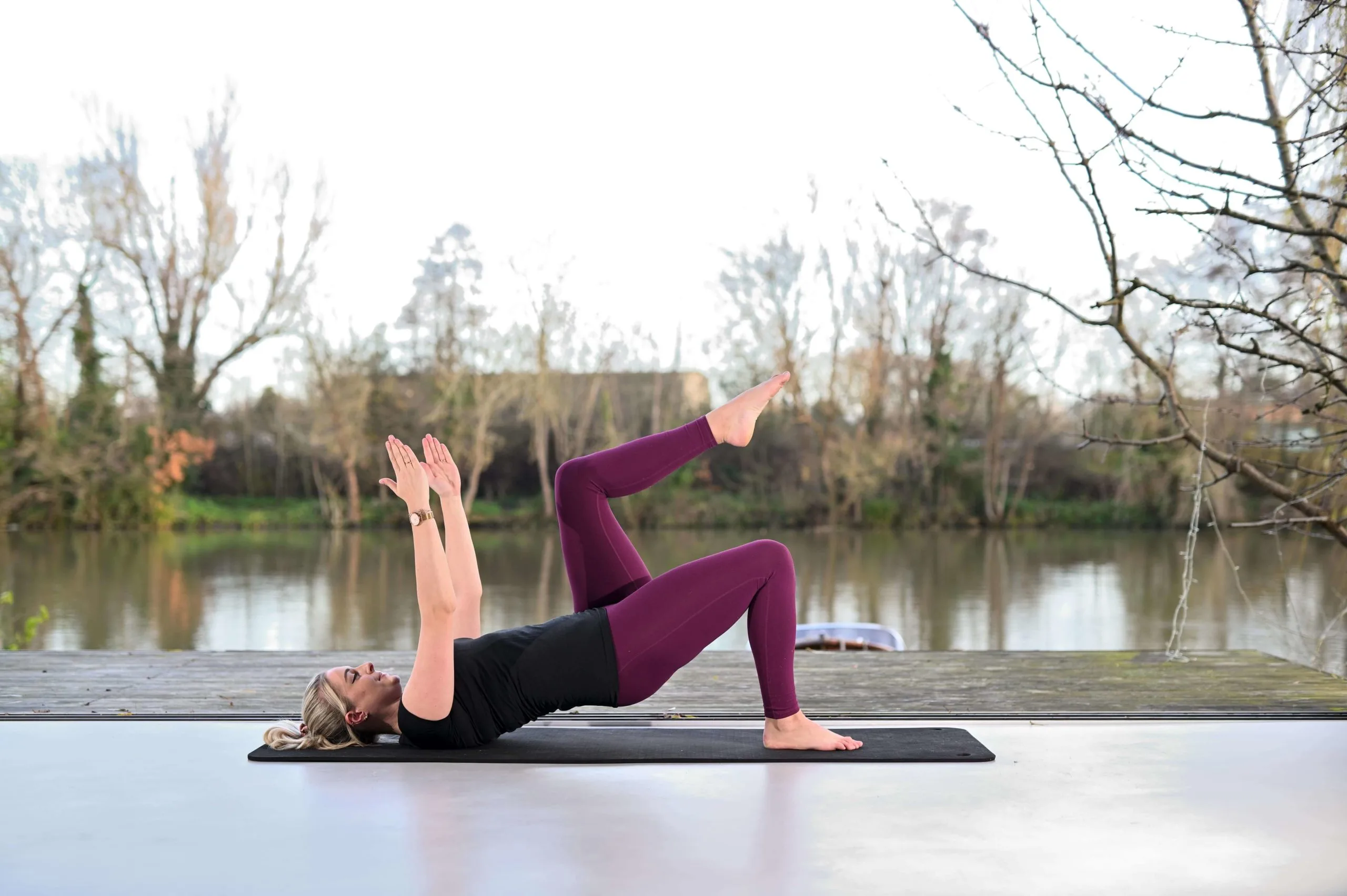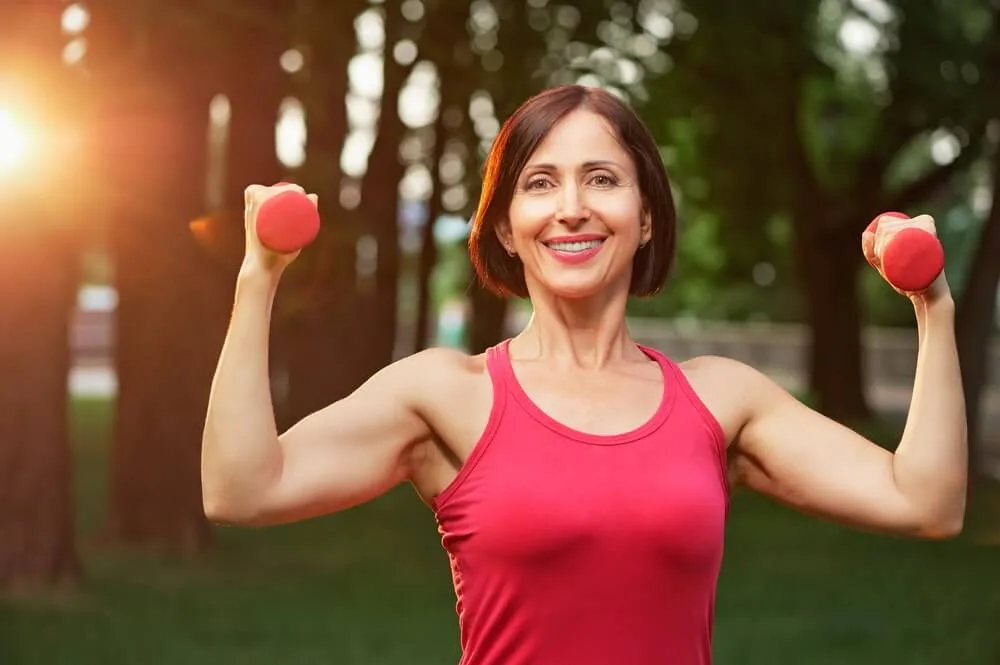Key Contributor: Begum Komurcuoglu, Chartered Physiotherapist
Do you experience hip pain? Our hip joints do a lot for us every day. Not only do they help us simply move about, but they also help us carry out more dynamic activities such as running, playing sports and moving explosively through HIIT classes. This means that the hip joints can experience a lot of load and impact. If our hip joints and the surrounding tissues aren’t able to cope with the load we expose them to, this can lead to pain and dysfunction.
The hip joint is a very stable and strong joint and is known as a ball-and-socket joint (the top of the thigh bone is shaped like a ball and the ‘ball’ sits inside a socket in your pelvis), connecting the lower limbs to the pelvis.
Hip pain is a common issue that affects many people, from children to older adults. Depending on the cause of the pain, people can experience symptoms all around the hip including at the back, the side, the front and near the pubic bone and groin. Symptoms will also depend on the type of tissue that is impacted, including bony causes such as osteoarthritis, muscular issues such as strains and tendinopathies as well as nerve and cardiovascular concerns.
Pilates can help with hip pain by providing rehabilitation and movement therapy that helps improve muscle strength and endurance, mobility, stability and coordination.
In this article, we’ll be discussing:
- What are the causes of hip pain?
- Is Pilates good for hip pain?
- What are the best Pilates exercises for hip pain?
- Why you should do Pilates for hip pain
What Are The Causes Of Hip Pain?
The hip joint is a complex joint with many potential causes for pain. It is important to understand the underlying problem to be able to treat it most effectively.
Muscular causes for hip pain can be caused by acute strains to the muscles or by an overload of the muscle and tendon structures over time. If the muscles aren’t able to cope with the load you are asking of them, this can cause changes to the muscles and tendon resulting in inflammation and pain.
Because the hip joint is a weight bearing joint, issues within the joint itself can occur, including osteoarthritis. Over time, the cartilage in your hip joint can start to wear down leading to stiffness and pain, particularly when you’re on your feet.
The hip joint is associated with the pelvis and sits closely to your spine. This means that some pain around the hip can be referred from nearby structures.
If you’re experiencing persistent hip pain, we recommend that you consult with your GP or physiotherapist so that they can assess the cause of your hip pain and ensure you’re receiving the appropriate treatment plan.
Is Pilates Good For Hip Pain?
Pilates can help reduce the symptoms of your hip pain or discomfort and help improve the underlying mechanical causes that might be contributing to your symptoms. Pilates equipment is a particularly beneficial exercise tool for those who experience pain in standing, as there are many resistance exercises that can be done seated or lying down. This allows you to build your strength, mobility and stability in pain-free positions, so you can then progress to more functional and challenging positions.

The Benefits Of Pilates For Hip Pain
- Pilates equipment allows you to exercise in pain-free positions. The use of spring resistance means that we can initially set up exercises that provide assistance to your movement, before progressing to set ups that provide more challenges in resistance, balance and control.
- Pilates can help improve the mobility of your hips if you struggle with stiffness or a feeling of reduced flexibility.
- Pilates can help strengthen the muscles of your hip and the surrounding areas such as your pelvis, core and lower limbs.
- Pilates can challenge and improve your balance, coordination and control through movement.
- Pilates can help improve your biomechanics such as your walking gait and more dynamic activities like swimming and running.
What do our experts say?
Pilates can be a very effective way to reduce hip because it helps improve range of motion of the joint and develop the muscle groups that provides hip stability and balance. The Pilates equipment provides the assistance to exercise pain-free, but also provides resistance to improve strength in the muscles around the hip. Pilates can improve body awareness and biomechanics in activities such as walking and running, which sometimes can be limited by hip pain.
What Are The Best Pilates Exercises For Hip Pain
There are many Pilates exercises to help your hips remain mobile and strong.
Below are four simple Pilates exercises that you can try at home today if you’re experiencing symptoms of your hips.
However, if you have any injuries that are being treated by a doctor or physio, always consult with them before trying any new exercises. If a movement causes pain or discomfort, it is best to stop and consult a qualified Clinical Pilates Practitioner or your physiotherapist.
1. Femur arcs or toe taps!
This exercise is a great way to get your hips moving freely and also targets your abdominal muscles, improving your core strength and control.
How to do the Pilates femur arc
- Lie on your back with your knees bent and feet in line with hips
- Find your relaxed neutral position of the pelvis
- Press one foot down into the floor and allow the other foot to hover off the floor
- Lift the knee up towards you keeping the knee angle at 90 degrees
- Take a breath and then lower the leg back down to the start position
- Repeat this on alternate sides
Top tips
- If you are in your mid to late stage pregnancy or have acute lower back pain, propping yourself up can help reduce the load on your abdominals and back. If you have back pain, start with an incline and then slowly reduce it until you’re able to lie on your back.
- While doing this exercise, check in on whether you are holding your breath or bracing through your neck, shoulders or back. Breathing into the sides of your ribs as well as your stomach and allowing them both to move will help you focus on not bracing.
- Yes, you will feel this in the front of your thighs! Your hip flexors are working here in order to move your hip! However, when you are in table top you should be able to feel that your front hip fold is soft. If you’re having trouble with this, try dropping your shins down.
2. Side lying glutes
Your gluteal muscles are important in providing stability to your hips and helping us with many day to day movements such as sit-to-stand, taking stairs and walking.
How to do the Pilates side lying glutes
- Lie on your side with a pillow under your head This position can be progressed to being up on your elbow as you get stronger and to include the rest of your body more – see the video.
- With the underneath knee bent reach the top leg straight away from you so your toe is reaching in opposite direction to the crown of your head.
- Keep reaching the leg as you hover the foot off the floor
- Lift the leg up only as far as you can without losing the neutral pelvis position and without hitching your hip up towards you.
- Slowly lower down and repeat.
Top tips
- Keep the top leg lengthening away from you to help keep your hip joint open
- Ensure your top leg doesn’t start sliding forward. Imagine the heel on the top leg is sliding up and down a wall behind you so that it stays in line with your bottom
- Maintain the alignment of the rest of your spine including your neck and head.
- Don’t worry if you can feel your bottom leg working too – it should be, as a stabiliser for your body.
- If you can’t get through the whole series, then slowly work through the modifications and each time, see if you can progress a little further.
Related Reading: Pilates exercises for legs
3. Single leg bridge
This is the ultimate Pilates strength exercise for your hips and achieving these is a great goal to have.
How to do the single leg bridge
- Lie on your back with feet on the floor
- Float one leg up to the table top position
- Press the other foot into the floor and allow your hips to lift
- Let the hips lead and lift towards the ceiling keeping the upper body relaxed
- Take a breath at the top and slowly lower down
- Repeat X 5 each side
Top tips
- If single leg bridges are too hard to begin with, try a double leg bridge first and progress to a staggered version.
- The further away your feet are from your bottom the harder this exercise will be on your hamstrings (back of your thigh).
- If you feel your back working a lot, tuck your tailbone under a little more and pull your heels towards your bottom to activate the back of your legs.
- Make sure your pelvis stays horizontally level. If you’re unsure, check in with your pelvic clock.
4. Pilates Hip flexor stretch and strengthening
This stretch is great if you feel tight at the front of your hips and thighs or if you sit for long periods during the day.
How To Do The Hip Flexor Pilates Stretch Exercise
- Kneel on one knee with the other bent in a 90-degree angle
- Tuck your tailbone under and drive your hip forward, maintaining a straight back and leaning your torso forward.
- Hold for 30 seconds
- Repeat two-five times with each leg
Top tips
- Remember to use your pelvic tilt. Tucking your tail under will help increase the stretch at the front of your hip.
- Remain upright and try not to lean backwards or stick your chest out
- If you’re struggling with balance, make sure to have a chair or wall nearby to hold onto.
Pilates Exercises That Should Be Avoided For Hip Pain
Because the causes for hip pain are varied the things to avoid will depend on you and your specific problem. If you find there are exercises that cause you to feel the pain more or cause catching in the hip joint it is best to avoid them until you have spoken to a physiotherapist or clinical Pilates instructor.
If your hip pain continues to affect your daily living, you should consider seeing a physiotherapist or clinical Pilates expert who can provide you with safe modifications and exercises to improve and reduce your pain.
Why Should You Consider Pilates If You Have Hip Pain?
Pilates is perfect for anyone who suffers with hip pain as it increases flexibility, improves range of movement and mobility in the hip joint and can also help prevent an injury from occurring.
At Complete Pilates we offer 1:1 programmes to help you reach specific goals. So, whether you are recovering from a specific hip injury or you are looking to improve the mobility and range of motion in your hips, we can provide you with a Pilates plan to help.
If you are worried about starting a new exercise we would always recommended you speak to your GP or physio, or clinical Pilates instructor here at Complete Pilates who are all trained to safely treat and create manageable plans to keep you healthy.
Pilates for Hips FAQs
-
Does Pilates help with hip bursitis?
Hip bursitis most commonly occurs at the bursae on the side of the hip. Bursae are small sacs located all throughout the body that help act as a cushion between structures to reduce friction.
Bursitis refers to a bursae that has become inflamed. This inflammation can be caused by reduced strength and overload of the gluteal muscles and is often irritated by lying directly onto the side or by prolonged walking.
Pilates can help with hip bursitis by improving the strength of the gluteal muscles and improving the overall mechanics of the hip joint. Pilates also helps improve the activation and strength of deep stabilisers of the hip and core which reduces load and tension on the hip structures.
-
Is Pilates good for hip arthritis?
The ball and socket of the hip are covered in cartilage, which over time can wear away. This can lead to pain and stiffness of the hip. Pilates is very good for managing hip arthritis. The supported movements of equipment Pilates help mobilise the joint and encourage the release and movement of synovial fluid. The design of the equipment also allows you to sit or lie down while you exercise and strengthen your muscles, reducing the pressure on your joint and allowing you to exercise with less pain. The stronger your muscles are around your hip, less force goes into the joint, helping you move more freely.
-
Can I do Pilates after a hip replacement?
You can do Pilates after a hip replacement. Once your consultant and physiotherapist have given you the all clear, Pilates is a fantastic way to progress your rehabilitation after a hip replacement. The Pilates equipment can help you build strength safely in all planes of movement and support you in progressing your exercises to more functional positions such as standing.
-
Is Pilates good for hip flexors?
Pilates can help you strengthen and lengthen your hip flexors. If you’re feeling tight across the front of your hips and into your thighs, Pilates can help improve that feeling through a range of exercises that aim to help improve the function of your whole hip.
Join us at Complete Pilates and Strengthen your hips
At Complete Pilates we offer 1:1 programmes to help you reach specific goals. So, whether you are recovering from a specific hip injury or you are looking to improve the mobility and range of motion in your hips, we can provide you with a Pilates plan to help.
If you are worried about your hip pain or starting a new exercise regime, we always recommend speaking to your GP or physio. Our clinical pilates instructors will always thoroughly assess you before commencing your exercise programme and are trained to ensure you’re exercising at a level appropriate and safe for you.
You can find us at one of our Pilates studios in London and speak to us about your hip pain. You can find us at our Pilates studio in North London or any of our studios (see our Kensington Pilates studio or our studio near London Bridge) for more information, please get in touch online or contact us on 0203 764 5668.
Get in touch online or contact us on 0203 764 5668 for further information and advice!
Education is key:
These blogs are designed to give information to everyone, however, it is important to remember that everyone is different! If you have not seen one of our therapists and have any questions about injuries, what you have read or whether this may be useful to you, please just ask. We are more than happy to help anyone and point you in the right direction. Our biggest belief is that education is key. The more you understand about your injury, illness and movement, the more you are likely to improve.





